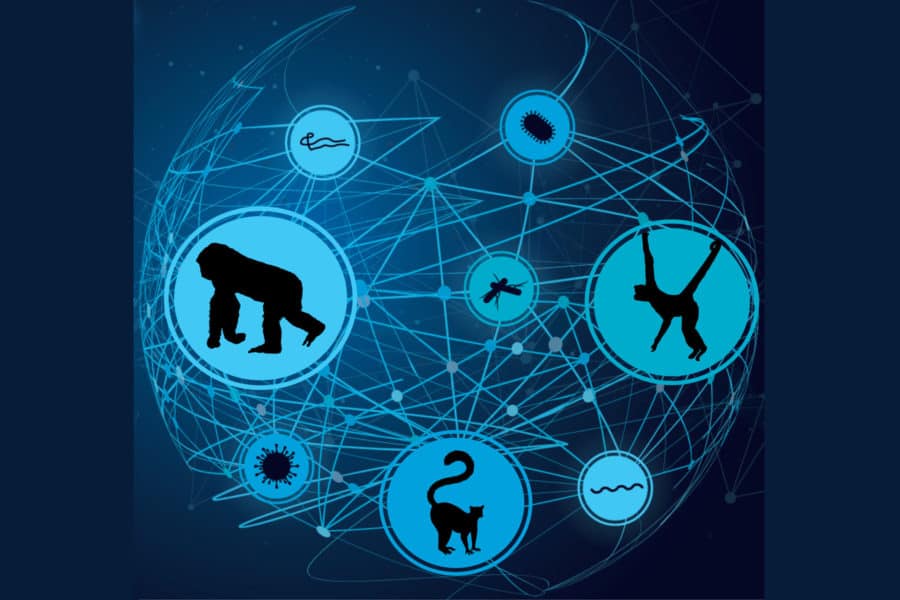Humans are uniquely susceptible to Alzheimer’s disease, with severe cognitive decline and memory loss common in old age. A new review explores how brain aging in non-human primates differs significantly, offering insights into potential protective mechanisms against Alzheimer’s.
Published in Aging | Estimated reading time: 7 minutes
How Human and Primate Brains Age Differently
While Alzheimer’s affects over 50 million people worldwide, non-human primates like chimpanzees, baboons, and macaques experience only mild cognitive and behavioral changes with age. This review by Ferrer Isidro from the University of Barcelona delves into these differences to uncover why primates are more resistant to aging-related brain damage.
In humans, harmful tau protein deposits, known as tau tangles, appear early and spread throughout the brain, damaging cells and triggering memory loss. Non-human primates rarely develop these tangles, and when they do, the pathology is confined to small regions. Similarly, while primates may exhibit beta-amyloid deposits, these fragments are less toxic than those seen in humans and do not interact with tau tangles to drive Alzheimer’s symptoms.
Evolution and Susceptibility to Alzheimer’s
The review posits that humans’ unique vulnerability to Alzheimer’s may stem from evolutionary adaptations, such as larger brains, longer lifespans, and higher cognitive functions. These traits, while beneficial, could make human brains more prone to damage from aging-related processes.
Moreover, the findings challenge the widely accepted amyloid cascade hypothesis, which identifies beta-amyloid as the primary driver of Alzheimer’s. Instead, this study highlights tau tangles as the most critical factor in disease progression. Treatments focusing on preventing tau deposits may prove more effective than those targeting beta-amyloid alone.
Implications for Alzheimer’s Research
By studying non-human primates, researchers may identify protective mechanisms that help their brains resist severe aging-related damage. These insights could lead to new strategies for delaying or preventing Alzheimer’s in humans. “These observations show that human brain aging differs from brain aging in non-human primates,” says Isidro. “Humans constitute the exception among primates in terms of severity and extent of brain aging damage.”
This perspective not only enhances our understanding of brain aging but also opens avenues for innovative therapies targeting tau pathology to mitigate Alzheimer’s progression.
Glossary
- Tau Tangles: Abnormal accumulations of tau protein in brain cells, linked to Alzheimer’s disease.
- Beta-Amyloid Deposits: Protein fragments that accumulate in the brain, forming plaques associated with Alzheimer’s.
- Amyloid Cascade Hypothesis: A theory suggesting beta-amyloid deposits are the primary cause of Alzheimer’s.
- Non-Human Primates: Closely related species such as chimpanzees, baboons, and macaques used in comparative research.
- Pathology: The study of disease processes and abnormalities in tissues.
Quiz
What are tau tangles?
Answer: Abnormal accumulations of tau protein in brain cells, linked to Alzheimer’s disease.
How do non-human primates resist severe Alzheimer’s symptoms?
Answer: They develop less toxic beta-amyloid deposits and rarely experience widespread tau tangles.
What hypothesis does this review challenge?
Answer: The amyloid cascade hypothesis, which identifies beta-amyloid as the main driver of Alzheimer’s.
What evolutionary traits may increase humans’ susceptibility to Alzheimer’s?
Answer: Larger brains, longer lifespans, and higher cognitive abilities.
Enjoy this story? Subscribe to our newsletter at scienceblog.substack.com.


